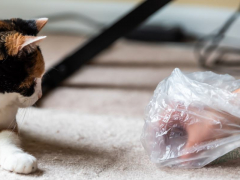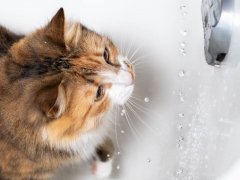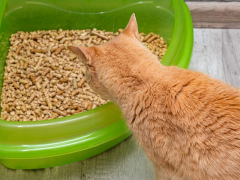
Whether they are engaged in pouncing practice with a toy mouse or fishing rod toy, or spending time learning tricks and solving puzzles, cats have a lot of energy and intelligence to use.
But cats can sometimes become overstimulated, which can lead to problems? Read on to find out what it means when a cat is overstimulated, how to recognize the warning signs, and what you can do about it.
What Does It Mean When a Cat Is Overstimulated?
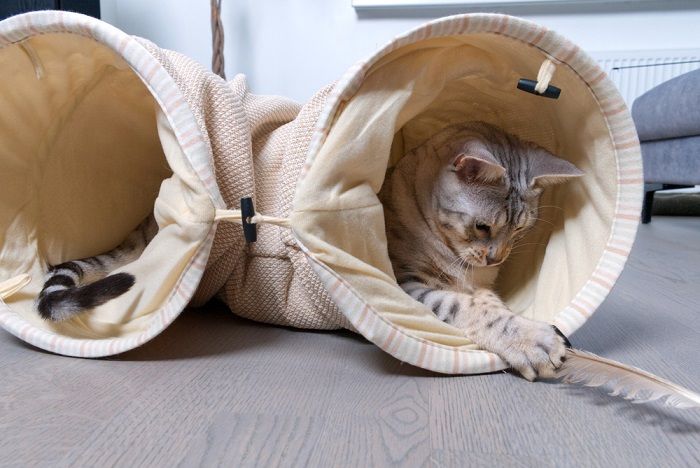
An overstimulated cat might act crazier than usual, with unpredictable behavior.
An overstimulated cat is a cat with changed behavior that is more erratic and unpredictable. An overstimulated cat’s behavior might seem very playful, or it might even border on aggressive.
Overstimulation is usually temporary, often lasting between five minutes and half an hour. When your cat is no longer overstimulated, their behavior and appearance should return to normal.
Why Do Cats Become Overstimulated?
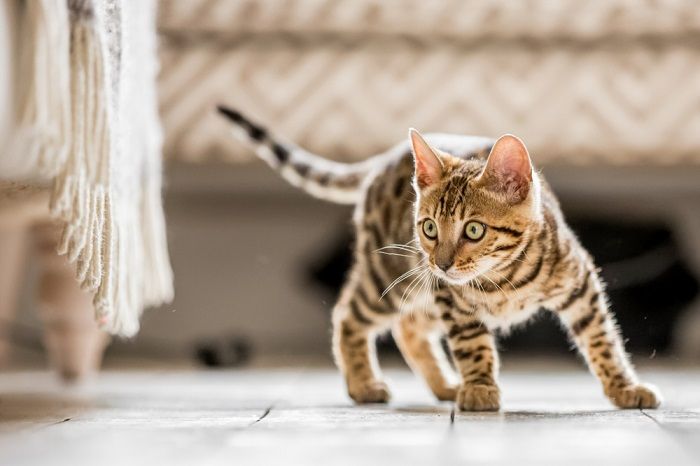
Cats can quickly go from playful and excited to overstimulated due to sensory overload.
Cats can become overstimulated when a lot is going on in their environment. This could be lots of noise, bright lights, an extended or enthusiastic play session, or an overexcited child pursuing them for a cuddle. This overstimulation is a result of sensory overload, where the cat’s senses become overwhelmed.
On the other hand, some cats might become overstimulated as a result of boredom or pent-up energy. This often leads to zoomies, which gets their heart pumping fast and gets them in a playful mood, which could lead to overexcitement.
If you’re enjoying one of your petting sessions with your cat, you might be surprised if they suddenly become overstimulated and bite or scratch you. Petting can sometimes lead to overstimulation and petting-induced aggression is quite a common cat behavior.
You could also inadvertently cause overstimulation in your cat by giving them catnip, and certain veterinary medications, especially sedatives and strong painkillers can cause your cat to act overstimulated.
Also Read: Why Does My Cat Attack My Feet?
What Are The Signs Of An Overstimulated Cat?
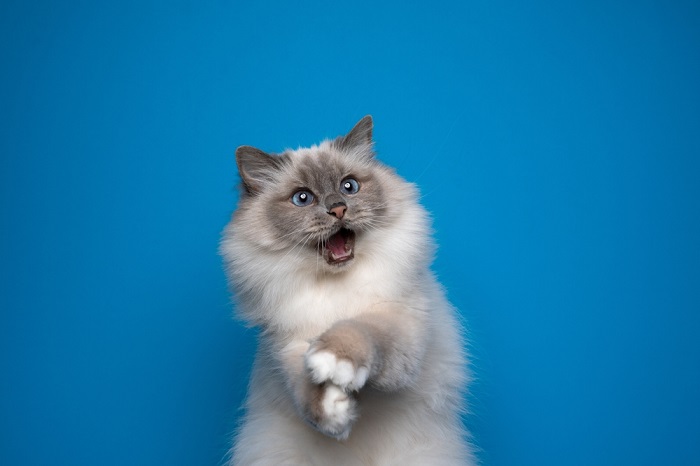
An overstimulated cat will display certain telltale physical signs.
So, how do you recognize if your cat is overstimulated? Luckily your cat’s body language should give you a few clues that are pretty hard to miss.
Dilated Pupils
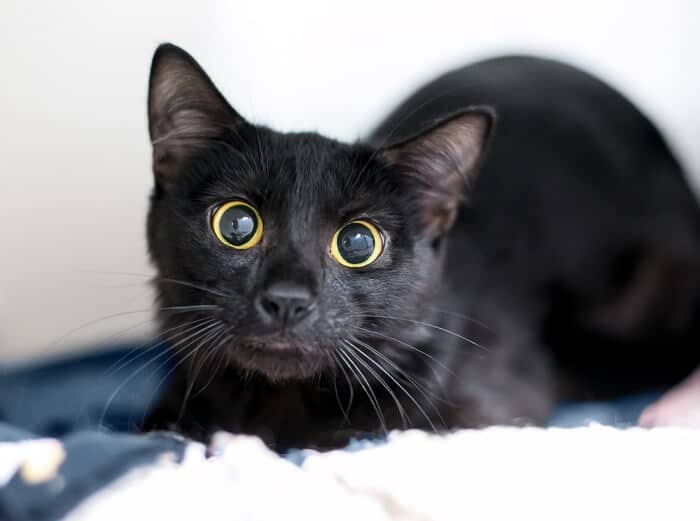
Overstimulation can cause dilated eyes with large, round pupils.
If your cat has eyes like saucers, with really big pupils, this could be a sign that they’re overstimulated. However, there are other causes of dilated pupils, too. If their eyes don’t return to normal quickly, if your cat seems confused or unable to see, or if their eyes seem red or sore, contact your veterinarian.
Also Read: Feline Hyperesthesia Syndrome
Swishing Tail
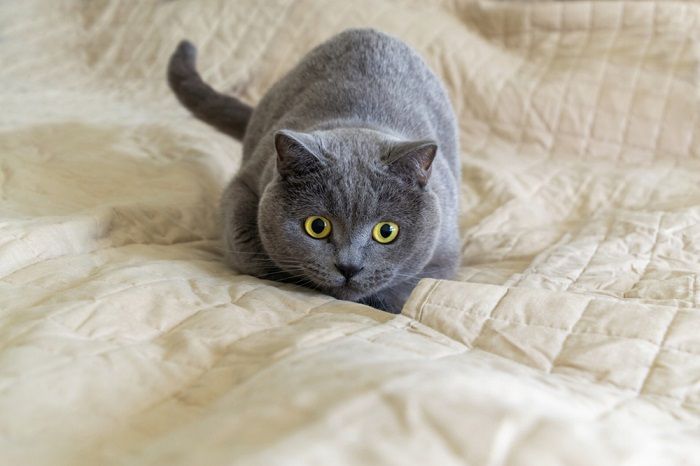
Tail swishing can indicate overstimulation, though cats sometimes do this during regular play.
Cats swish their tails for lots of reasons. Often it means they’re angry or irritated, but sometimes it means they’re ready to pounce on their pray or their playmate. It can also be a sign of overstimulation, though.
Also Read: What Your Cat’s Tail Can Tell You
Vocalization
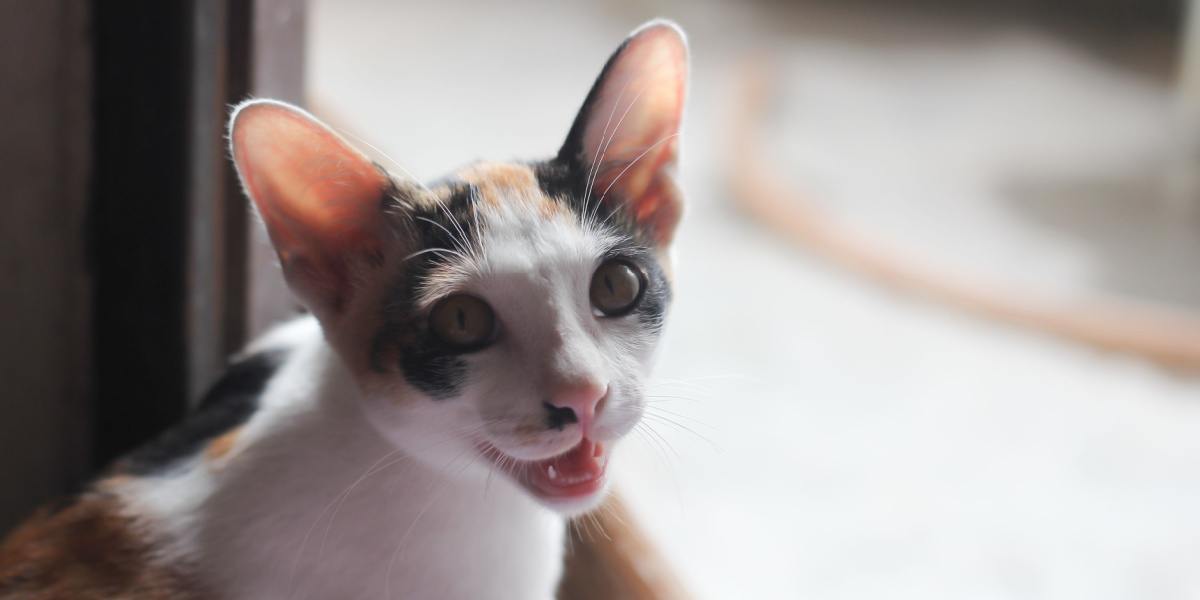
Some overstimulated cats let out loud yowling or growling sounds.
If your cat is overstimulated, they might let out a loud meow known as yowling or even a low growl. This vocalization is common if your cat is overexcited or on the prowl looking for fun, but if your cat yowls or growls regularly it could be a sign of pain or a medical condition like hyperthyroidism or senile change. Therefore, if your cat’s vocalization doesn’t fit with overstimulation or doesn’t subside when they calm down, speak to a vet.
Also Read: Do Cats Like It When You Talk To Them?
Scratching
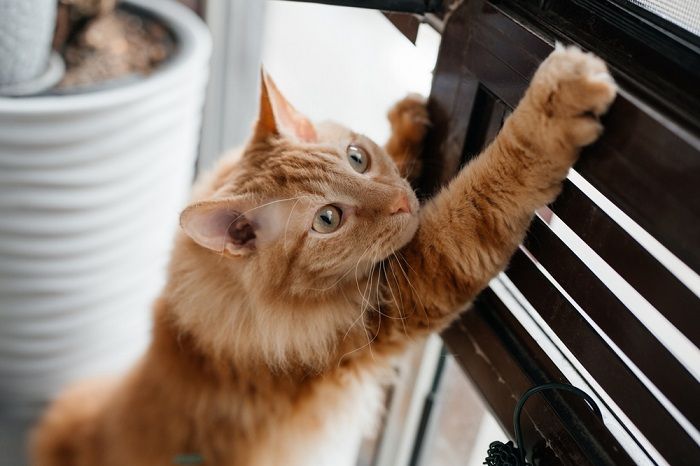
Overstimulated cats might act out by inappropriately scratching the furniture or you.
Overstimulated cats might scratch furniture or carpets, but that’s not all. Lashing out with their paws and claws can be a sign of overstimulation in cats. They usually don’t mean to hurt you, but it’s common for cats to get a bit carried away and overexcited. This could mean that they attack your feet or chase your pants leg as you walk around the house minding your own business.
Also Read: How To Stop Cats From Scratching Furniture
Biting
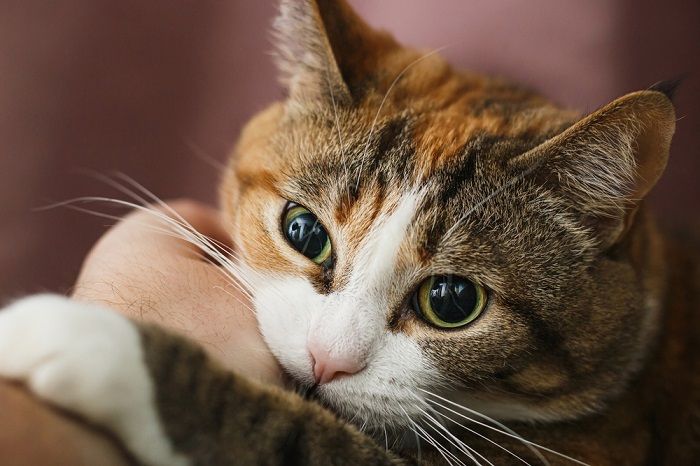
Cats might bite when they become overstimulated during petting sessions.
Just as you might be at the sharp end of your cat’s claws, you might also find that your little angel tries to bite you. Again, this isn’t something to be taken personally, but aggressive play behavior or cat bites are common in an overstimulated cat.
Also Read: Why Do Cats Bite Each Other’s Necks?
Zoomies
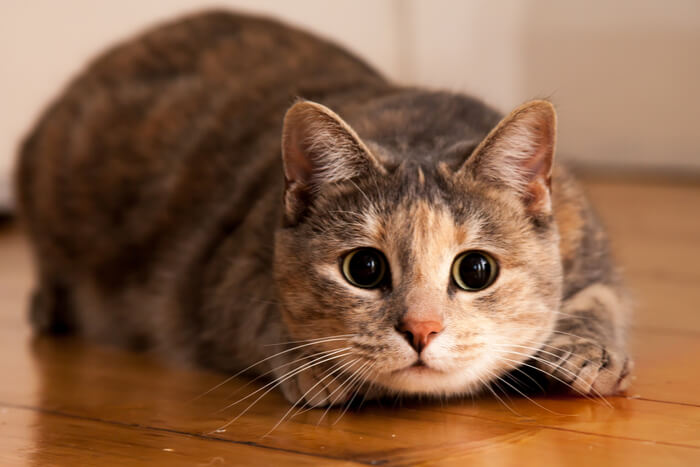
Zoomies (note this cat’s dilated eyes) might result when cats feel overstimulated.
It’s not just dogs that do zoomies—cats do, too. If your cat is overstimulated, overexcited, or on high alert, you might notice them tearing around and around the room at a rate of knots. They might climb high on the furniture or dart in and out of their litter box. It can look a bit odd, but it’s completely normal. Check out our article on why cats get the zoomies for more information.
How Do You Calm Down An Overstimulated Cat?
If your cat is acting overstimulated and you want to calm them down, try some of these tried-and-true tips:
Don’t Engage In Play
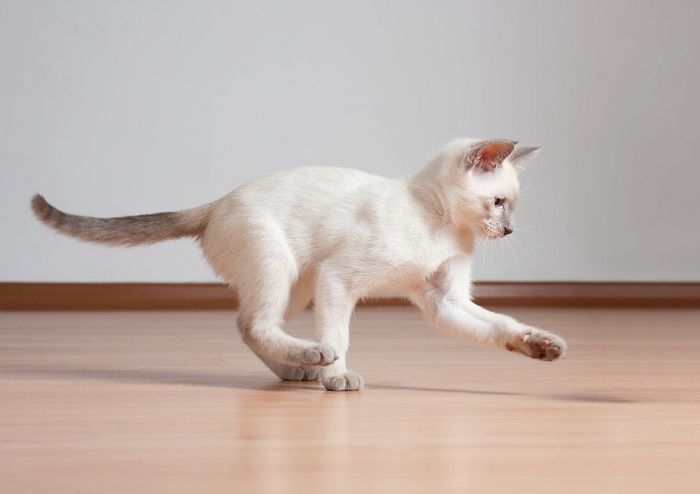
End play sessions if your cat tips over to the point of overstimulation.
Although it’s a good idea to spend time playing with your cat in general, if they are overstimulated, you’ll only encourage their frantic behavior. Instead, try not to engage with them and let them calm down on their own.
You can then make a plan to increase the amount of time you spend playing with them day to day, to help them use their energy and reduce boredom.
Also Read: The 7 Best Calming Cat Treats
Dim The Lights
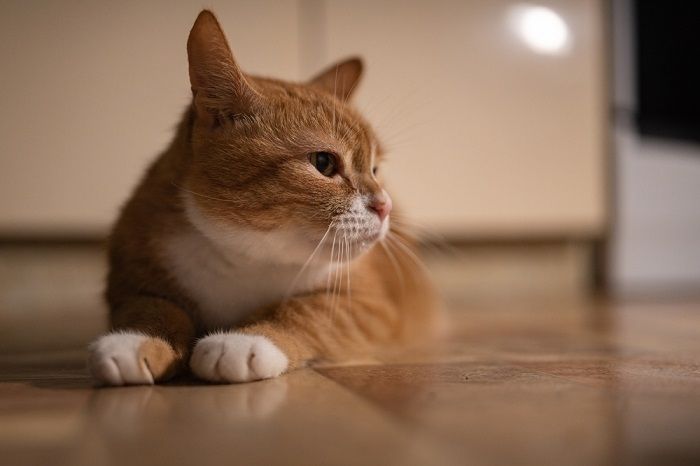
As with people, dim lighting can help overstimulated cats calm down.
Bright lighting or flashes from the television show you’re watching could further overwhelm your cat’s senses, stimulating them even more. Therefore, dimming the lights should help to calm them down.
Also Read: Why Does Your Cat Yowl At Night & How Do You Get Them To Stop?
Keep The Volume Low
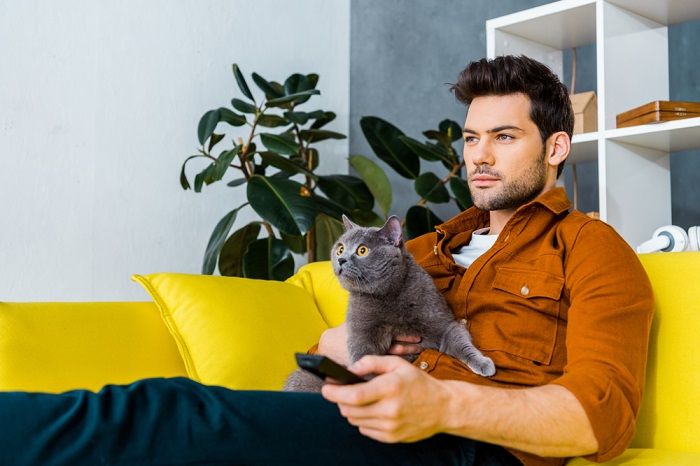
When you dim the lights, also turn down the volume of the TV or radio, or turn them off entirely.
Loud music, conversations, or television shows could keep your cat feeling wired. Try keeping things quiet and calm to help them settle down.
Also Read: 7 Sounds Cats Hate That You Should Avoid
How Can You Stop Your Cat From Getting Overstimulated?
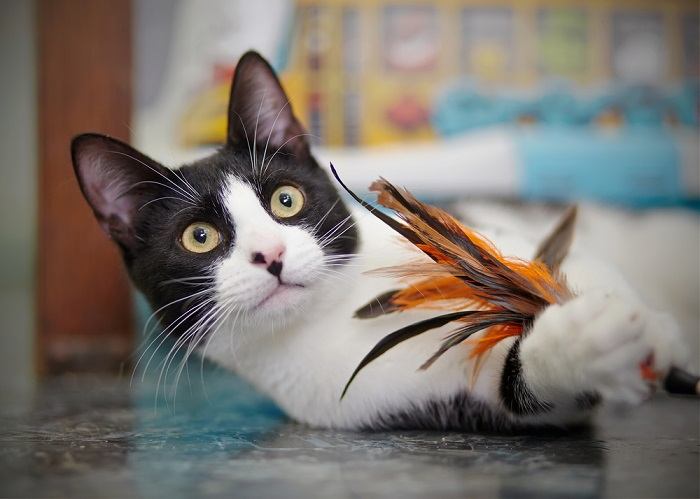
If overstimulation is happening regularly, have a plan in place to try to prevent it from happening.
If your cat has regular episodes of overstimulation, you might feel a little frustrated, not to mention having to keep your hands and feet safe from claws and teeth! Luckily, you can try many strategies to prevent your cat from becoming overstimulated in the first place.
Have Plenty Of Toys
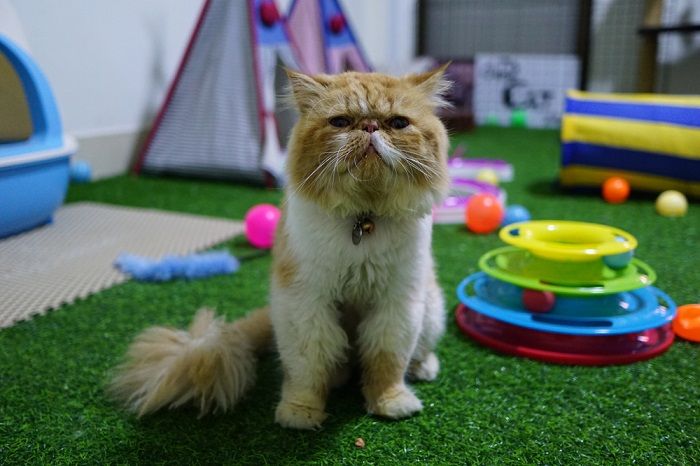
Give your cat daily opportunities to engage their body and mind in play to help stave off episodes of overstimulation.
It might seem counterintuitive to increase your cat’s toys, but sometimes boredom encourages overstimulation. If your cat has plenty of toys, puzzles, and activity centers, they’ll use their energy throughout the day, so that it doesn’t come out in one big outburst.
Also Read: The 10 Best Cat Slow Feeders & Puzzle Feeders
Engage In Play
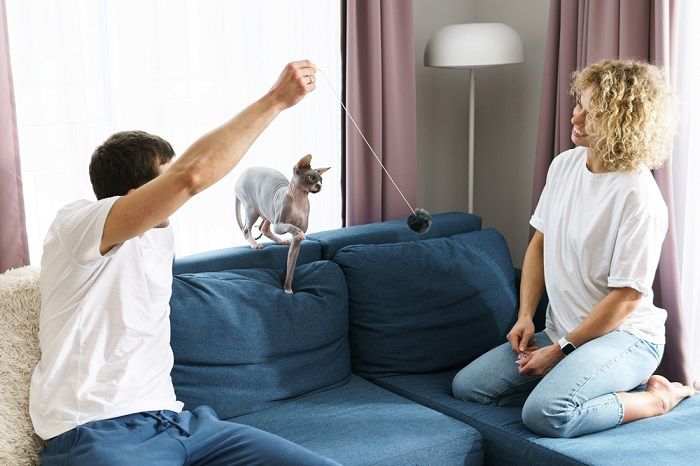
Schedule in two or three short play sessions with your cat every day.
It’s all very well having lots of toys, but without your encouragement, your cat might not bother playing with them. Try to engage them in playtime as often as you can. Interactive play burns energy and your bond will get even stronger – it’s a win/win situation!
Also Read: How Much Does It Cost Spay or Neuter A Cat?
Provide Scratching Posts
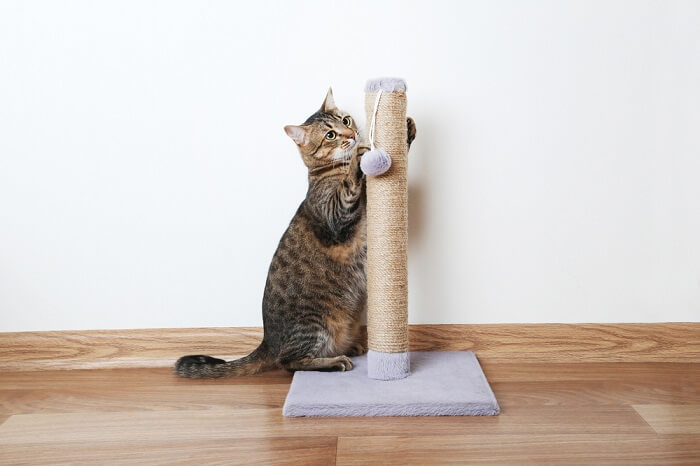
Scratching posts won’t just protect your furniture from claw damage, they’ll also help keep your cat active and occupied. Bring home a cat tree or a selection of scratching posts and mats to make sure your cat is less tempted to scratch elsewhere. Read our article on how get your cat to use a scratching post for some help.
Use Calming Products
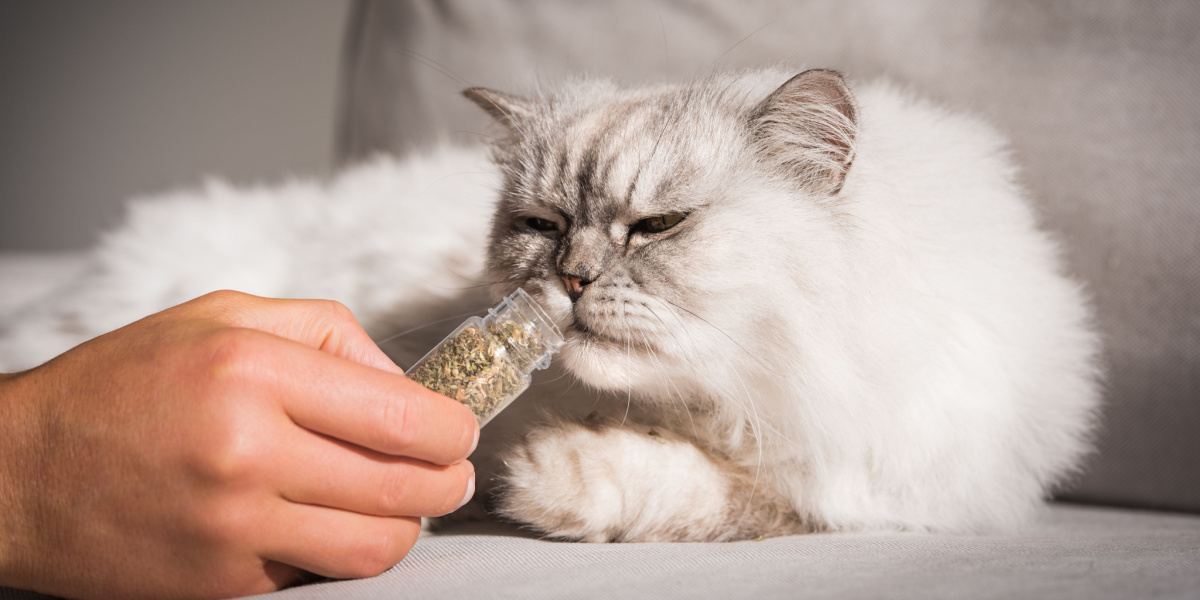
Catnip can cause excitement in some cats, but other cats will become relaxed when sniffing this herb.
Just as catnip can cause excitability and overstimulation in some cats, calming products might do the opposite. Pheromone sprays and diffusers or calming products like valerian and tryptophan could keep your cat chilled. However, you should only ever use products intended for cats, so speak to your veterinarian if you are unsure.
Also Read: The 5 Best Catnip Products For Cats (Spray & Toys and More Surprises)
